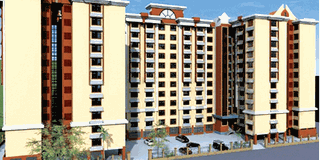State vows to prioritise low cost housing developments

File | NATION
An artist’s impression of the planned Seefar Apartments on Mbagathi Way, Nairobi. The developers say they are targetting low-income earners with the units, which will cost about Sh4.5 million for a two-droom unit. Housing minister Soita Shitanda says this is a step in the right direction.
What you need to know:
- Ignored and labelled unprofitable, the middle- and low-income economic brackets have suffered the consequences of a disinterested housing industry for too long. Now the government says it will shift its focus to these cadres, who also deserve affordable, modern and stylish living
The government has lauded developers of middle-income and low-cost housing, pledging to support them in their efforts to enable more Kenyans access decent housing at affordable prices.
Describing the middle- and low-income groups as the “most forgotten of Kenya’s population”, Housing minister Soita Shitanda said that currently, the private sector housing market caters for the upper-middle income and high-income groups, leaving the lower middle and low-income unattended.
“The middle and low-income earners in Kenya today represent 80 per cent of the overall population; these are part of the target group which I strongly encourage investors to turn their attention to, and engage with all manner of decent, stylish and affordable housing concepts,” he said during the official launch of Seefar Apartments, a middle-income housing development being put up by Erdemann Property Ltd within Highrise Estate, off Mbagathi Way, Nairobi.
Mr Shitanda said the Ministry of Housing has developed and pushed for the approval of incentives aimed at attracting formal private developers into the low-income housing segment in order to meet the current housing demand.
He challenged developers to familiarise themselves with the available incentives “and take advantage of this window of opportunity, while at the same time notifying us on their effectiveness and possible areas of improvement”.
The Sh1 billion Seefar Apartments, whose construction has started, comprises 288 middle-income units — 264 two-bedroom units and 24 three-bedroom units — on three blocks of 12 floors that include water reticulation, a borehole, sewerage, two lifts, back-up generator and underground water storage tanks.
Zeyun Yang, the managing director of Erdemann Property Ltd, said his company, which a while back developed Metro Fairview Towers in Pangani, has a mission to build affordable and decent houses for the middle and low-income earners in the country.
However, he said, the current policy environment is still hostile to low-cost housing developers.
“Building affordable low-cost housing in Kenya is still an uphill task.... The government should come up with some special policies that would address the unique needs of developers of low-cost housing,” Mr Yang said.
Such incentives, said Mr Yang, should include tax breaks for both buyers and developers of low-cost housing.
Mr Shitanda said that currently, first-time buyers are exempted from paying taxes as long as the house cost is not more than Sh1.6 million.
“I think this threshold is unrealistic and needs to be increased,” he said in reference to the high housing prices, adding that his ministry was still waiting for the Treasury to approve some proposed incentives for developers of low-cost housing.
Private developers have often been criticised for focusing more on providing housing for the upper-middle and high-end segments of the market and forgetting the low-income segment, which they consider unprofitable.
But they have always shot back by asking the government to provide “meaningful” incentives that would attract them to this market segment.
Recently, Femi Adewole, Shelter Afrique’s director in charge of business development and operations, said that most African governments, Kenya included, don’t seem to take housing as seriously as they should, and have failed to provide meaningful incentives for those investing in low-income housing.
A developer at a property forum held recently in Nairobi said that Kenya was still far from offering affordable low-cost housing because the cost of constructing a house was still prohibitive.
He said over 50 per cent of a developer’s cost goes to putting up necessary infrastructure and paying various government and local authority charges such as occupation licences.




